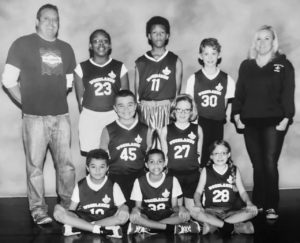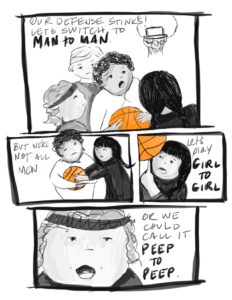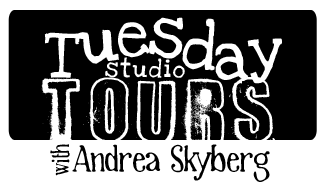How Language Shapes Our Views on Gender
This post is part of celebrating Women’s History month with 31 days of posts focused on improving the climate for social and gender equality in the children’s and teens’ literature community. Join in the conversation on Twitter #kidlitwomen or on Facebook at https://www.facebook.com/kidlitwomen.
 For the past 4 years I’ve been a grade-school and middle-school basketball coach, training both boys and girls on my co-ed teams. Over the years, I’ve watched as girls drop out of the sport, and by 7th grade, there’s maybe 2 girls for every 10 boys. There are many contributing factors to this drop off—gender separation on a social level, emphasis placed on wining over learning, and a general advocacy by parents for their sons to keep playing, but not so much for their daughters—but in addition to these reasons, I see that language is also responsible.
For the past 4 years I’ve been a grade-school and middle-school basketball coach, training both boys and girls on my co-ed teams. Over the years, I’ve watched as girls drop out of the sport, and by 7th grade, there’s maybe 2 girls for every 10 boys. There are many contributing factors to this drop off—gender separation on a social level, emphasis placed on wining over learning, and a general advocacy by parents for their sons to keep playing, but not so much for their daughters—but in addition to these reasons, I see that language is also responsible.
Language builds our world, places value, and shows us how to define things. When girls start their basketball careers in first grade and they hear their coaches (who are often men) tell them to play man-to-man defense, do they think this sport is mostly for boys? When they hear the words “man your position,” do they think the sport includes them? What about when they’re called “guys”? Being lumped in with the dudes as though nothing about them deserves acknowledgement? Might they believe that basketball doesn’t have space for them?
Many people may see these as insignificant issues—girls are used to this, it’s the way it’s always been, and if they’re that sensitive they shouldn’t be playing the game. These are the types of responses I’ve received in reaction to my insistence on being careful with our words. And in many cases the responses are right—this has been the way it’s always been. Even though women have been playing basketball since the late 1800s (a year after men’s basketball started, and the two have evolved alongside each other over the years), and the WMBA has been going strong for the last twenty years, defense is still more often than not called man-to-man. And girls are used to this. Of course they are. Because the use of the male-dominated language isn’t only in sports, it’s in everyday language that uses men as the general neutral and erases away the existence of women. So girls have learned not to be too sensitive about language as they live in a male-dominated world building snowmen, wearing their cowboy boots, or talking about issues that affect mankind.
Although the basketball world is different from the children’s literature world, the concept is the same—what we call things matters. This field is tough. Not only because breaking into it takes perseverance, determination, and a commitment to constantly refine our craft. But even more so, it’s tough because what we create has a direct impact on the future. In a sense when we build a world in a book, we build a world in reality—a world outside ourselves. That is why it’s so important to have inclusion and diversity, and why we need to educate ourselves about our own limitations in that inclusion. We’re building new worlds. It’s an immense privilege and it’s a great responsibility.
 I’ve been working on a book about my experience with coaching. It’s called Girlcott, a term coined by track star and Olympian Lacey O’Neal in 1968, and used more recently to define a movement that supports rather than denies (e.g. They girlcotted all the neighborhood stores owned by women). I love the word and the history behind girlcott, however I contemplated it’s use after reading Women of Kidlit posts which question showing gender as a limited binary of boy and girl. I certainly don’t want to exclude someone, as I believe making space for all people to feel accepted in the world is highly important. So I questioned if I should stop using the words boy and girl? I questioned if the term girlcott as the opposite to boycott feels bias? These are issues and questions that deserve attention, and it’s one of the reasons I postponed my post, as I needed some time to contemplate and make changes. What I decided (for this post and my Girlcott manuscript) is that it’s not about erasing the terms girl and boy, but instead including more terms so that girl and boy aren’t the beginning and the end—that we’re also recognizing the beautiful middle space of the spectrum. I believe the easiest way to do this, is to have access to a universally-accepted English word that is gender-neutral. There are many variations that specifically define all the facets of gender (check out Dill’s article on non-binary pronouns HERE), but I’d love to have one general term that incorporates the full gender-spectrum and is also easy to say. In Girlcott, the team decides that word is “peep”, as in “the Wolfpack is going to play peep-to-peep defense”.
I’ve been working on a book about my experience with coaching. It’s called Girlcott, a term coined by track star and Olympian Lacey O’Neal in 1968, and used more recently to define a movement that supports rather than denies (e.g. They girlcotted all the neighborhood stores owned by women). I love the word and the history behind girlcott, however I contemplated it’s use after reading Women of Kidlit posts which question showing gender as a limited binary of boy and girl. I certainly don’t want to exclude someone, as I believe making space for all people to feel accepted in the world is highly important. So I questioned if I should stop using the words boy and girl? I questioned if the term girlcott as the opposite to boycott feels bias? These are issues and questions that deserve attention, and it’s one of the reasons I postponed my post, as I needed some time to contemplate and make changes. What I decided (for this post and my Girlcott manuscript) is that it’s not about erasing the terms girl and boy, but instead including more terms so that girl and boy aren’t the beginning and the end—that we’re also recognizing the beautiful middle space of the spectrum. I believe the easiest way to do this, is to have access to a universally-accepted English word that is gender-neutral. There are many variations that specifically define all the facets of gender (check out Dill’s article on non-binary pronouns HERE), but I’d love to have one general term that incorporates the full gender-spectrum and is also easy to say. In Girlcott, the team decides that word is “peep”, as in “the Wolfpack is going to play peep-to-peep defense”.
Breaking down gender bias is a team sport, which is why I’m interested in hearing other ideas. So KIDLIT TEAM, what word do you believe works best as a gender neutral pronoun?
PS. A special thanks to Grace Lin and Karen Blumenthal for giving us a space to share, debate, and learn from each other over the past month. It’s been amazing! Also, thanks to every person who contributed a post or communicated in the comment section. I grew and learned so much in this past month, and I’m grateful that this conversation is still going strong. Go Team!


Check out this series: https://en.wikipedia.org/wiki/Native_Tongue_(Elgin_novel)
I love peep-to-peep!
Back in the ’80s, we made a lot of progress on getting rid of words like “mankind” and replacing them with “humankind.” It no longer sounded odd to talk about a committee chair (instead of chairman or chairwoman). You could tell if a politician was woke or not by their choice of vocabulary. But I notice there’s been a lot of backsliding since then in this as well as other feminist issues. Time to recommit!